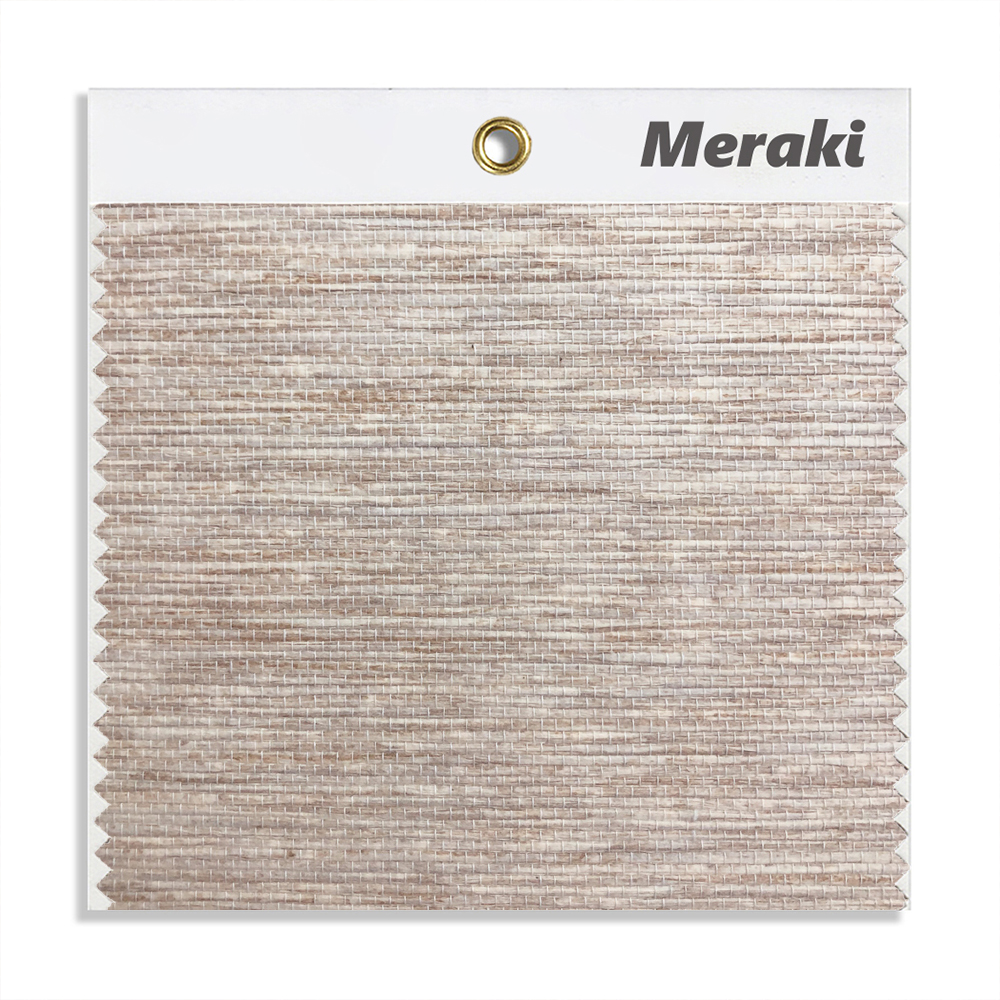Understanding coral grasscloth Wallpaper
Coral grasscloth wallpaper is a distinctive choice for interior decor, celebrated for its natural beauty and tactile appeal. Made from a variety of natural fibers such as arrowroot, hemp, and sea grass, this wallpaper offers a unique texture that is often sought after by homeowners and designers alike. The manufacturing process involves weaving these fibers onto a paper backing, which results in a heavy texture that is surprisingly lightweight. However, because of its delicate nature, special care must be taken during installation.
Characteristics of Grasscloth Wallpaper
Grasscloth wallpaper is unique due to its all-natural composition and the potential for variance in color and texture between panels. Each roll or panel is crafted from natural fibers, making each one distinct. This means no two strips will be identical, a feature that many enthusiasts appreciate as it adds to the material's charm. However, this also poses a challenge when it comes to installation, particularly regarding seam visibility and color matching.
Assessing Your DIY Skills
Installing grasscloth wallpaper can be a challenging task, even for seasoned DIY enthusiasts. The delicacy of the material requires a careful and methodical approach. Before deciding to undertake this project, assess your skill level and willingness to manage potential installation hurdles such as matching seams and ensuring no adhesive gets on the paper's surface.
Potential Challenges
- Seam Visibility: Due to natural variations in the material, seams will inevitably be noticeable.
- Handling Adhesive: Excess glue or water on the paper can cause staining, requiring meticulous application techniques.
- Material Sensitivity: The natural fibers can absorb moisture, making them unsuitable for high-humidity areas like bathrooms.
Preparing Your Wall Space
Proper wall preparation is crucial to achieving a successful grasscloth wallpaper installation. This involves cleaning, measuring, and priming the walls to ensure optimal adhesion and appearance.
Cleaning and Priming
Start by removing any existing wallpaper and repairing any damaged areas on your walls. Ensure the surface is smooth and free of dust or debris. A high-quality wallpaper primer should be applied to seal the wall and provide a uniform surface for the wallpaper to adhere to. Some manufacturers recommend tinting the primer to match the wallpaper to prevent any contrast at the seams.
Tools and Materials You'll Need
Gathering the right tools and materials beforehand can streamline the installation process and reduce the likelihood of errors.
Essential Tools
- Utility knife or sharp blade
- Measuring tape
- Smoothing brush
- Pasting table
- Level or laser level
- Wallpaper primer
- Clear, non-staining wallpaper adhesive
Planning the Layout
Planning the layout is a critical step in the process as it helps minimize seam visibility and ensures a harmonious appearance.
Mapping Your Installation
Begin by marking the center of each wall and planning your panel placement to avoid narrow strips on one side. Calculate the number of panels needed and consider potential variances in color when positioning each piece. It's advisable to shade the rolls, laying them out side by side to identify color differences before cutting.
Cutting and Handling Grasscloth
Precision in cutting and handling the grasscloth wallpaper is vital to prevent damage and ensure a clean finish.
Cutting Panels
Measure the height of each panel accurately, allowing an additional two inches at the top and bottom to accommodate trimming during installation. Handle the material carefully to avoid fraying or damaging the fibers.
Applying the Wallpaper
Once the wall and paper are prepared, the application process requires attention to detail to achieve the best results.
The Application Process
Use the paste-the-paper method, ensuring the adhesive is applied evenly to the back of each panel. Avoid getting any glue on the front of the paper, as it may cause irreversible staining. Align the panel with the guiding lines on the wall, smoothing it out with a brush to remove any air bubbles or creases.
Addressing Seams and Shadows
Seam visibility is a characteristic feature of grasscloth wallpaper, but careful installation can help lessen their prominence.
Minimizing Seam Appearance
Reverse-hanging alternate panels can help mitigate noticeable seam lines by aligning color variations. Additionally, using a primer color that matches the wallpaper can reduce the appearance of seams.
Maintaining Coral Grasscloth
Proper maintenance is essential to preserving the integrity and appearance of your coral grasscloth wallpaper over time.
Cleaning and Care
Avoid excessive moisture when cleaning grasscloth wallpaper. Instead, lightly dust it with a soft cloth or vacuum with a brush attachment. Avoid abrasive cleaning agents that might damage the natural fibers.
When to Consult a Professional
While DIY is possible, there are situations where professional installation might be more advantageous to ensure a flawless finish.
Professional Expertise
Professionals bring experience and specialized tools that can handle the unique challenges of grasscloth wallpaper. Consider hiring experts if the installation area presents complex challenges or if you desire a seamless finish without visible seams.
Meraki Provide Solutions
For those seeking expert guidance and solutions in grasscloth wallpaper installation, Meraki offers comprehensive services tailored to meet your specific needs. Our team of professionals specializes in handling delicate materials like coral grasscloth, ensuring a high-quality, aesthetically pleasing result. By entrusting your project to Meraki, you benefit from our extensive experience, precision, and commitment to excellence. Whether you require full installation services or need expert advice on specific challenges, Meraki is ready to assist you in achieving the perfect finish for your space.

Post time: 2025-09-22 21:20:04


